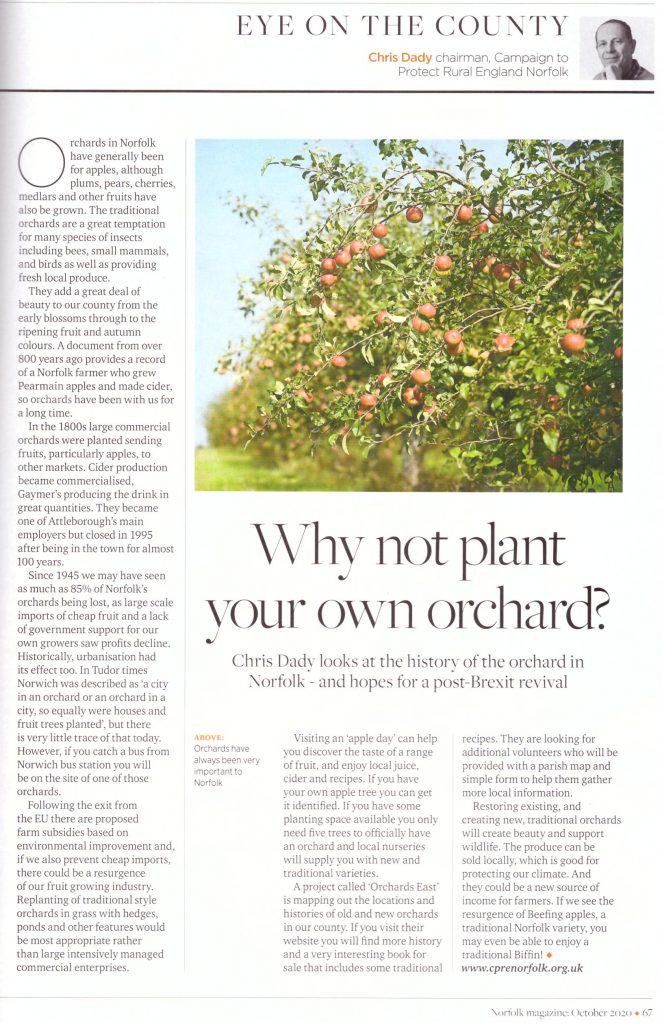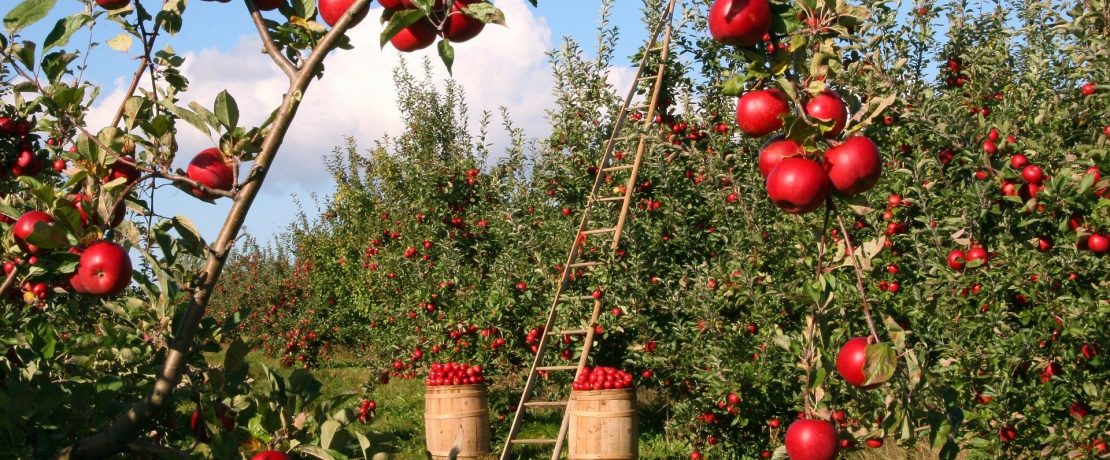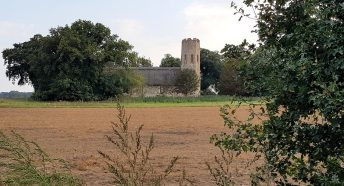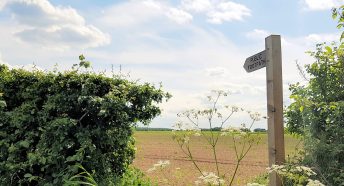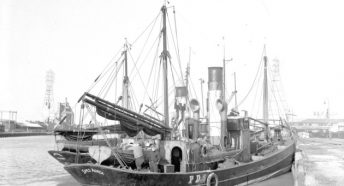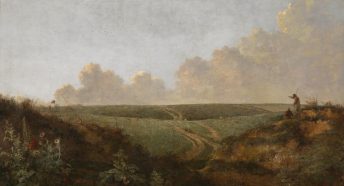Why not plant your own Orchard?
Chris Dady looks at the history of the orchard in Norfolk – and hopes for a post-Brexit revival.
Orchards in Norfolk have generally been for apples, although plums, pears, cherries, medlars and other fruits have also been grown. The traditional orchards are a great temptation for many species of insects including bees, small mammals, and birds as well as providing fresh local produce.
They add a great deal of beauty to our county from the early blossoms through to the ripening fruit and autumn colours. A document from over 800 years ago provides a record of a Norfolk farmer who grew Pearmain apples and made cider, so orchards have been with us for a long time.
In the 1800s large commercial orchards were planted sending fruits, particularly apples, to other markets. Cider production became commercialised, Gaymer’s producing the drink in great quantities. They became one of Attleborough’s main employers but closed in 1995 after being in the town for almost 100 years.
Since 1945 we may have seen as much as 85% of Norfolks orchards being lost, as large-scale imports of cheap fruit and a lack of government support for our own growers saw profits decline. Historically, urbanisation had its affect too. In Tudor times Norwich was described as ‘a city in an orchard or an orchard in a city, so equally were houses and fruit trees planted’, but there is very little trace of that today. However, if you catch a bus from Norwich bus station you will be on the site of one of those orchards.
Following the exit from the EU there are proposed farm subsidies based on environmental improvement, and if we also prevent cheap imports there could be a resurgence of our fruit growing industry. Replanting of traditional style orchards in grass with hedges, ponds and other features would be most appropriate rather than large intensively managed commercial enterprises.
Visiting an ‘apple day’ can help you discover the taste of a range of fruit, and enjoy local juice, cider and recipes. If you have your own apple tree you can get it identified. If you have some planting space available you only need five trees to officially have an orchard and local nurseries will supply you with new and traditional varieties.
A project called ‘Orchards East’ is mapping out the locations and histories of old and new orchards in our county. If you visit their website, you will find more history and a very interesting book for sale that includes some traditional recipes. They are looking for additional volunteers who will be provided with a parish map and simple form to help them gather more local information.
Restoring existing, and creating new, traditional orchards will create beauty and support wildlife. The produce can be sold locally, which is good for protecting our climate. And they could be a new source of income for farmers. If we see the resurgence of Beefing apples, a traditional Norfolk variety, you may even be able to enjoy a traditional Biffin!
This article first appeared in the October 2020 edition of the Norfolk magazine.
